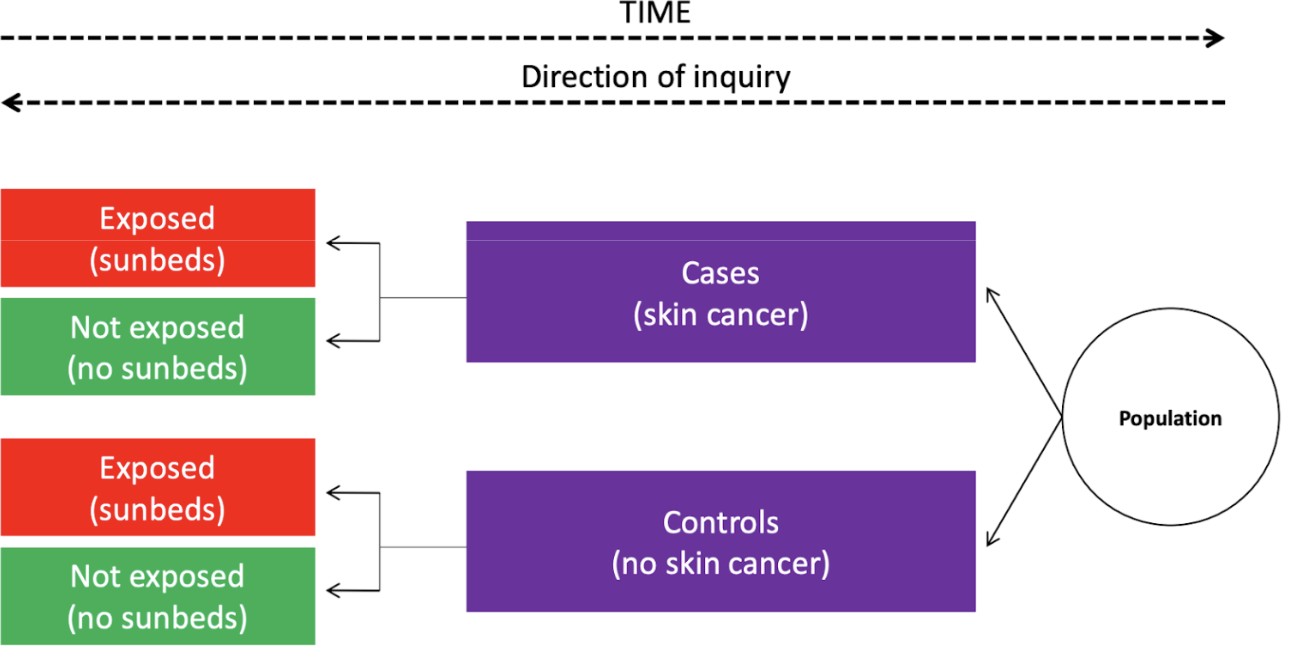Quantitative Observational Study design
1/4
There's no tags or description
Looks like no tags are added yet.
Name | Mastery | Learn | Test | Matching | Spaced |
|---|
No study sessions yet.
5 Terms
Ecological Studies
Focus: Populations as the unit of analysis.
Examples: Comparing disease rates in countries or over time.
Advantages: Quick, cheap, hypothesis-generating.
Limitations:
No individual-level data (ecological fallacy).
Confounding and bias.
Can’t infer causation.
Case study/case series
Case Study: Report on a single patient.
Case Series: Report on multiple similar patients.
Advantages:
Identify rare diseases/events.
Useful for early discovery.
Limitations:
No control group.
Selection bias and confounding.
Cross-sectional studies
Also Known As: Prevalence studies.
Focus: Snapshot in time at individual level.
Example: Beer and obesity study (measured alcohol intake & BMI).
Advantages:
Cheap, quick.
Estimate disease prevalence.
Limitations:
No causality.
Time-specific only
Case-control studies
Retrospective: Start with disease, look back at exposure.
Advantages:
Good for rare diseases.
Cost-effective and fast.
Limitations:
Recall and selection bias
Exposure measured after outcome.
Participants are selected based on whether or not they have the outcome (the disease). Their past exposure is then investigated to find possible causes.

Cohort studies
Prospective or Retrospective.
Prospective: Follow individuals forward in time.
Retrospective: Use existing records to look back.
Advantages:
Establish a temporal relationship.
Good for rare exposures.
Limitations:
Time-consuming, costly.
Loss to follow-up and selection bias
Participants are selected on the basis of exposure Participants are then followed up to identify whether or not they have the outcome
